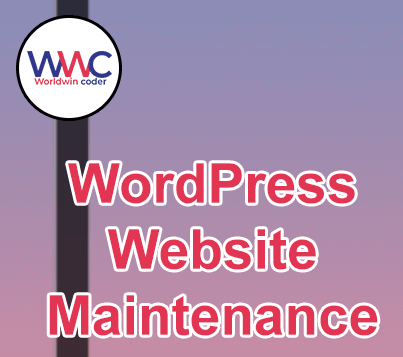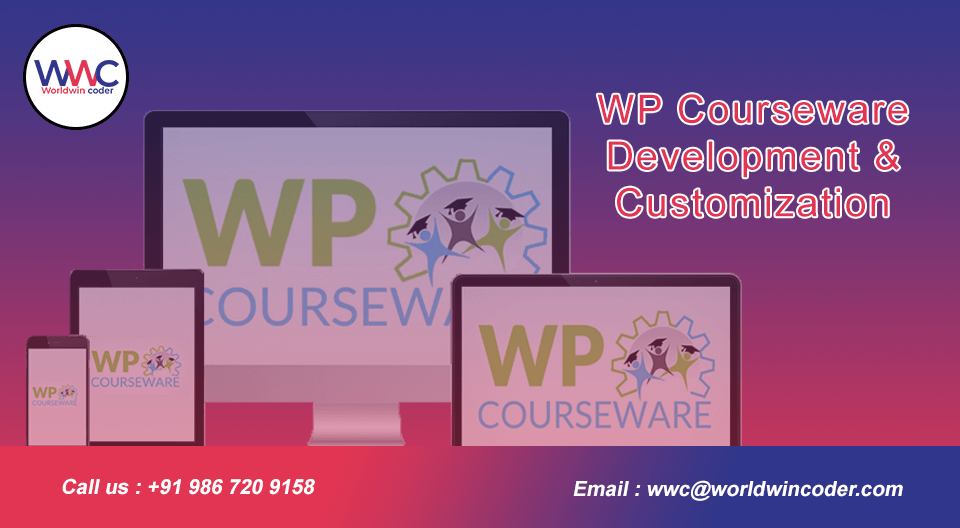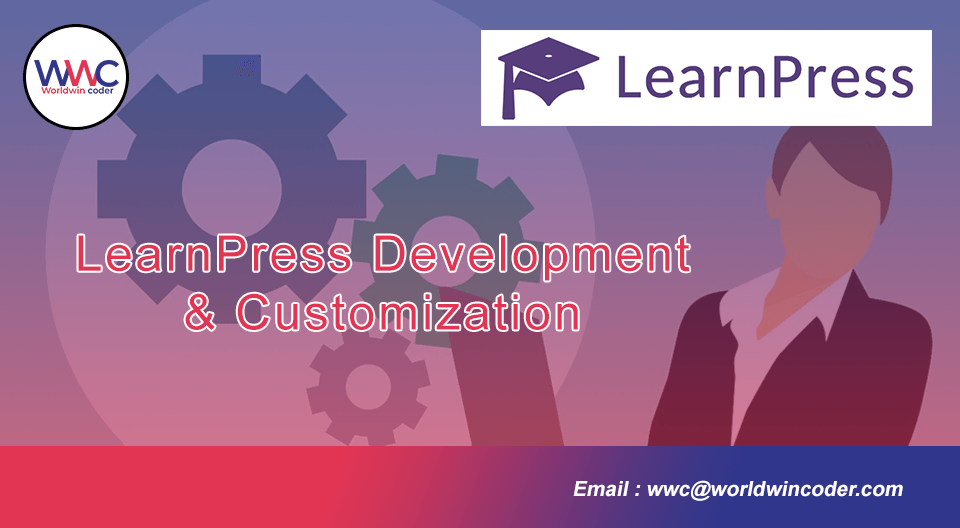
by Vishavjeet | Dec 21, 2023 | blog, WordPress
In the rapidly evolving landscape of online education, selecting the right Learning Management System (LMS) for your WordPress website is crucial. Two popular choices that often come up in discussions are LifterLMS vs LearnDash. Both plugins offer powerful features to create and manage online courses, but they have their own unique strengths and weaknesses. In this article, we’ll compare LifterLMS and LearnDash to help you make an informed decision for your e-learning platform.
Ease of Use:
-
- LifterLMS: LifterLMS prides itself on being user-friendly, making it easy for beginners to set up and manage courses. The interface is intuitive, and the plugin seamlessly integrates with your WordPress dashboard.
- LearnDash: LearnDash is known for its straightforward and intuitive design. The user interface is clean and well-organized, offering a smooth experience for both course creators and learners.
Course Building and Content Creation:
-
- LifterLMS: LifterLMS provides a flexible drag-and-drop course builder that allows you to easily create and arrange your course content. It supports multimedia elements, quizzes, and assignments, offering a well-rounded course creation experience.
- LearnDash: LearnDash is renowned for its advanced course builder, enabling detailed lesson planning and content structuring. It supports a variety of media types and offers a unique feature called Focus Mode, which minimizes distractions for learners.
Membership and Access Control:
-
- LifterLMS: LifterLMS excels in membership management, allowing you to create different membership levels with varying access to courses. This is particularly useful if you want to provide exclusive content to specific groups of learners.
- LearnDash: LearnDash also offers robust membership features, enabling you to create membership levels and control access to courses. It integrates well with various membership plugins, giving you additional flexibility.
Quizzing and Assessment:
-
- LifterLMS: LifterLMS provides a comprehensive quiz builder with various question types and grading options. It allows you to create engaging quizzes that enhance the learning experience.
- LearnDash: LearnDash comes with a powerful quiz builder that supports a wide range of question types. It offers detailed reporting and analytics to track learner progress and performance.
Integration and Add-ons:
-
- LifterLMS: LifterLMS integrates seamlessly with popular plugins and services, offering a wide range of add-ons for enhanced functionality. It supports payment gateways, email marketing services, and more.
- LearnDash: LearnDash also has a robust ecosystem of integrations and add-ons, ensuring compatibility with various third-party tools. It supports payment gateways, CRM systems, and other essential plugins.
Conclusion:
Choosing between LifterLMS vs LearnDash ultimately depends on your specific needs and preferences. LifterLMS stands out for its user-friendly interface and excellent membership management, while LearnDash excels in advanced course structuring and assessment features. Consider your priorities and the unique requirements of your online courses before making a decision. Both plugins offer powerful tools to create engaging and effective e-learning experiences for your audience.

by Vishavjeet | Dec 19, 2023 | blog, WordPress
In the fast-paced world of online content, a sluggish website can be a deal-breaker for your audience. One of the key factors influencing your WordPress site’s speed is its database. Over time, as you create and manage content, your database can become cluttered and inefficient. In this article, we’ll explore the importance of WordPress database optimization and provide you with actionable tips to enhance your site’s performance.
Understanding the Importance of Database Optimization
Your WordPress database is like a digital filing cabinet where all your site’s content, settings, and user data are stored. As this database grows, it can impact your site’s loading speed, making it crucial to optimize regularly. Here’s why it matters:
1. Improved Loading Speed
Optimizing your database reduces the time it takes for your site to retrieve and display information. Faster loading speeds not only enhance the user experience but also contribute to better search engine rankings.
2. Enhanced User Experience
A slow website can lead to higher bounce rates and decreased user satisfaction. Optimizing your database ensures a smooth and seamless experience for your visitors, keeping them engaged and increasing the likelihood of conversion.
3. Efficient Resource Utilization
An optimized database consumes fewer server resources, preventing unnecessary strain on your hosting environment. This is particularly crucial for shared hosting plans where resource allocation is limited.
Actionable Tips for WordPress Database Optimization
Now that we understand the importance of database optimization, let’s delve into practical steps you can take to ensure your WordPress site runs at peak efficiency.
1. Regular Backups
Before making any changes, always perform a backup of your website. This ensures that you can restore your site to its previous state in case anything goes wrong during the optimization process.
2. Delete Unused Plugins and Themes
Inactive plugins and themes not only take up space but may also have residual data in your database. Remove any unnecessary plugins and themes to declutter your database.
3. Optimize Database Tables
Use the built-in optimization feature in WordPress or consider using plugins like WP-Optimize to clean up and optimize your database tables. This process can reclaim valuable space and improve performance.
4. Clean Up Post Revisions and Drafts
WordPress automatically saves post revisions and drafts. While this is a useful feature, it can contribute to database bloat over time. Limit the number of revisions saved per post or use a plugin to manage and delete old revisions.
5. Optimize Images and Media Files
Large media files can contribute to slow loading times. Compress images and other media files before uploading them to your site. Additionally, consider using lazy loading to defer the loading of offscreen images.
6. Utilize a Content Delivery Network (CDN)
A CDN distributes your website’s static content across multiple servers worldwide, reducing latency and speeding up page load times. Integrate a CDN with your WordPress site for improved performance.
7. Implement Caching
Caching reduces the server load by storing static versions of your site’s pages. Use caching plugins like W3 Total Cache or WP Super Cache to enhance performance and decrease page load times.
Conclusion
WordPress database optimization is a critical aspect of maintaining a high-performing website. By implementing these actionable tips, you can ensure that your site runs efficiently, providing a seamless and enjoyable experience for your visitors. Take the time to regularly optimize your database, and watch as your WordPress site reaches new heights of speed and responsiveness.

by Vishavjeet | Dec 15, 2023 | blog, WordPress
In today’s digital age, the demand for online courses has skyrocketed, offering learners the flexibility to acquire new skills from the comfort of their homes. If you’re considering launching your online course, look no further than WordPress. In this article, we’ll explore why WordPress is the ideal platform for creating and managing online courses, providing you with the tools you need to share your knowledge with the world.
Why Choose WordPress for Online Courses?
1. User-Friendly Interface
WordPress boasts an intuitive and user-friendly interface, making it easy for educators, even those without extensive technical knowledge, to create and manage their online courses effortlessly. The platform’s dashboard is designed for simplicity, allowing you to focus on what matters most – your content.
2. Robust Content Management System (CMS)
As a powerful CMS, WordPress enables you to organize your course content efficiently. From lessons and modules to multimedia elements, you have complete control over how your course is structured. This flexibility ensures a seamless learning experience for your students.
3. Diverse Multimedia Integration
Engage your audience with diverse content formats. WordPress supports various multimedia elements, including videos, images, and audio. This versatility enables you to create dynamic, interactive lessons that cater to different learning styles.
4. Responsive Design for Mobile Learning
With an increasing number of users accessing content on mobile devices, it’s crucial to provide a responsive learning experience. WordPress themes are designed to be mobile-friendly, ensuring that your course looks great and functions well on smartphones and tablets.
Setting Up Your Online Course with WordPress
1. Choose the Right Theme
Select a WordPress theme optimized for e-learning. Look for features such as course navigation, lesson progression, and easy integration with popular learning management system (LMS) plugins.
2. Leverage Learning Management System (LMS) Plugins
WordPress offers a range of LMS plugins, such as LearnDash, LifterLMS, and Sensei. These plugins provide essential features like course progress tracking, quizzes, and user management, enhancing the overall learning experience.
3. Create Compelling Content
Craft engaging and informative content for your online course. Break down your material into digestible modules and lessons, and supplement text with multimedia elements to keep your students captivated.
4. Implement Secure Payment Gateways
If your course is a paid offering, integrate secure payment gateways like PayPal or Stripe. WordPress plugins can simplify the process, allowing you to monetize your knowledge effectively.
Promoting Your Online Course
1. Utilize SEO Best Practices
Optimize your course content for search engines to attract a broader audience. Incorporate relevant keywords, use descriptive meta tags, and create a sitemap to enhance your course’s visibility.
2. Social Media Integration
Harness the power of social media to promote your online course. Share snippets, testimonials, and updates across platforms to build anticipation and attract potential students.
3. Encourage User Reviews
Build credibility by encouraging students to leave reviews. Positive testimonials can be powerful marketing tools, instilling confidence in prospective learners.
Conclusion
WordPress stands as a reliable and versatile platform for creating and managing online courses. Whether you’re an educator, trainer, or industry expert, harness the power of WordPress to share your knowledge with a global audience. By following these guidelines, you can establish a compelling online course that engages learners and contributes to the ever-expanding world of digital education.

by Vishavjeet | Dec 13, 2023 | blog, WordPress
In the dynamic world of web hosting, the choice of server software plays a crucial role in determining the performance and reliability of your website. If you’re running a WordPress site, one powerful option to consider is pairing it with Nginx. In this article, we’ll delve into the benefits and intricacies of using Nginx for WordPress, exploring how this combination can enhance your site’s speed, security, and overall user experience.
Why Nginx for WordPress?
1. Speed Boost:
Nginx is renowned for its efficiency in handling concurrent connections, making it an excellent choice for high-traffic websites. Learn how Nginx’s event-driven architecture can significantly improve the speed of your WordPress site, ensuring swift loading times for your visitors.
2. Scalability:
As your WordPress site grows, scalability becomes a critical consideration. Discover how Nginx excels in handling increased traffic and provides a scalable solution that can adapt to the changing needs of your website.
3. Resource Efficiency:
Nginx’s lightweight design allows it to operate with minimal resources, making it an optimal choice for optimizing server performance. Explore how this can positively impact your site’s responsiveness and reduce server load.
Setting Up WordPress on Nginx
1. Installation and Configuration:
Walk through the process of installing Nginx and configuring it to work seamlessly with WordPress. Gain insights into essential settings and tweaks to ensure optimal compatibility.
2. Caching Strategies:
Leverage Nginx’s powerful caching capabilities to enhance your WordPress site’s performance. Understand different caching strategies and learn how to implement them effectively.
3. SSL/TLS Security:
Security is paramount for any website. Learn how to set up SSL/TLS certificates with Nginx to encrypt data transmission, securing your WordPress site and earning the trust of your users.
Advanced Tips and Tricks
1. Load Balancing:
Explore the concept of load balancing with Nginx to distribute traffic across multiple servers, optimizing performance and ensuring reliability, even during traffic spikes.
2. Web Application Firewall (WAF):
Strengthen your WordPress site’s security by implementing a Web Application Firewall using Nginx. Discover how to protect your site from common vulnerabilities and potential threats.
3. Content Delivery Network (CDN) Integration:
Learn how to integrate a CDN with Nginx to distribute content strategically, reducing latency and improving the global accessibility of your WordPress site.
Conclusion:
By combining the flexibility and efficiency of Nginx with the popular content management system, WordPress, you can create a powerful, high-performance website that delights visitors and withstands the challenges of the digital landscape. Follow the steps and strategies outlined in this guide to optimize your site with Nginx, ensuring a seamless user experience and a robust online presence.

by Vishavjeet | Dec 8, 2023 | blog, Uncategorized
In the fast-paced digital era, the eLearning industry has emerged as a transformative force, revolutionizing the way we acquire knowledge and skills. As technology continues to advance, so does the landscape of online education. In this article, we will explore the evolution of the eLearning industry, uncovering key trends, challenges, and the promising future that lies ahead.
The Rise of eLearning:
The eLearning industry has witnessed a meteoric rise, fueled by the need for accessible and flexible education. The convenience of learning from anywhere at any time, coupled with interactive multimedia content, has made eLearning an attractive option for students and professionals alike. The widespread adoption of Learning Management Systems (LMS) has played a pivotal role in facilitating the delivery of online courses.
Technological Innovations:
Advancements in technology have significantly shaped the eLearning landscape. From the early days of basic online courses to the integration of virtual reality (VR) and augmented reality (AR), the industry has continuously evolved. Adaptive learning algorithms, artificial intelligence, and machine learning have personalized the learning experience, catering to individual needs and preferences.
Mobile Learning:
With the proliferation of smartphones and tablets, mobile learning has become a game-changer in the eLearning industry. Learning materials are now accessible on-the-go, breaking down traditional barriers to education. Mobile apps, responsive design, and microlearning modules have made it easier for learners to engage with content in bite-sized, digestible formats.
Challenges and Opportunities:
Despite its growth, the eLearning industry faces challenges such as ensuring inclusivity, addressing the digital divide, and maintaining high-quality content. However, these challenges also present opportunities for innovation. Collaborations between educators, tech developers, and policymakers can pave the way for solutions that bridge gaps and enhance the overall eLearning experience.
Future Trends:
Looking ahead, the eLearning industry is poised for further advancements. The integration of artificial intelligence for personalized learning paths, the expansion of gamification elements, and the incorporation of immersive technologies are among the trends shaping the future. Additionally, the rise of alternative credentials, such as micro-credentials and digital badges, is gaining traction as learners seek more flexible and modular educational pathways.
Conclusion:
The eLearning industry’s journey from its inception to its current state reflects a commitment to innovation and adaptability. As technology continues to evolve, so too will the methods of knowledge dissemination. The eLearning industry stands as a testament to the transformative power of education in the digital age, empowering learners worldwide to navigate the waves of innovation and embrace a future of limitless possibilities.

by Vishavjeet | Dec 6, 2023 | blog, WordPress
In the rapidly evolving landscape of education, the integration of technology has become paramount for institutions seeking to provide an enriched learning experience. One such technological marvel making waves in the educational sector is the Learning Management System (LMS). In this blog post, we’ll delve into the world of LMS for education, exploring its benefits, features, and the transformative impact it has on the teaching and learning process.
Understanding LMS for Education:
What is an LMS?
A Learning Management System (LMS) is a software application designed to streamline the administration, documentation, tracking, reporting, and delivery of educational content. Essentially, it serves as a digital hub for educators and learners, facilitating the creation and management of courses, assessments, and other learning materials.
The Benefits of LMS in Education:
1. Centralized Learning Environment:
LMS provides a centralized platform where students and educators can access all relevant information, resources, and communication tools in one place. This fosters a seamless and organized learning experience.
2. Flexibility and Accessibility:
With the rise of online and blended learning models, LMS allows students to access educational materials from anywhere at any time. This flexibility is particularly beneficial for those with diverse schedules or geographical constraints.
3. Engaging Multimedia Content:
LMS platforms often support a variety of multimedia content, including videos, interactive quizzes, and simulations. This dynamic approach to learning enhances engagement and caters to different learning styles.
4. Progress Tracking and Analytics:
Educators can monitor student progress in real-time, allowing for timely intervention and personalized support. Analytics features also provide valuable insights into the effectiveness of teaching methods and course materials.
5. Collaborative Learning Opportunities:
LMS fosters collaboration among students through discussion forums, group projects, and interactive features. This not only enhances the learning experience but also cultivates essential teamwork and communication skills.
Features of a Robust LMS:
1. User-Friendly Interface:
An intuitive interface ensures that both educators and students can navigate the platform effortlessly, making the learning experience enjoyable and stress-free.
2. Content Management System (CMS):
LMS should offer robust content creation and management tools, allowing educators to upload, organize, and update course materials efficiently.
3. Assessment and Grading Tools:
The ability to create and grade assessments within the platform simplifies the evaluation process for educators and provides instant feedback to students.
4. Integration Capabilities:
Seamless integration with other educational tools and platforms enhances the overall functionality of the LMS, creating a cohesive digital learning ecosystem.
5. Security and Privacy Measures:
Given the sensitive nature of educational data, a reliable LMS should prioritize security and privacy, ensuring that student information remains confidential and protected.
Conclusion:
As education continues to evolve, the adoption of Learning Management Systems emerges as a transformative force. The benefits of a well-implemented LMS are far-reaching, creating a dynamic and efficient learning environment that caters to the diverse needs of students and educators alike. Institutions that embrace this technological shift position themselves at the forefront of educational innovation, paving the way for a more accessible, engaging, and effective learning experience.






